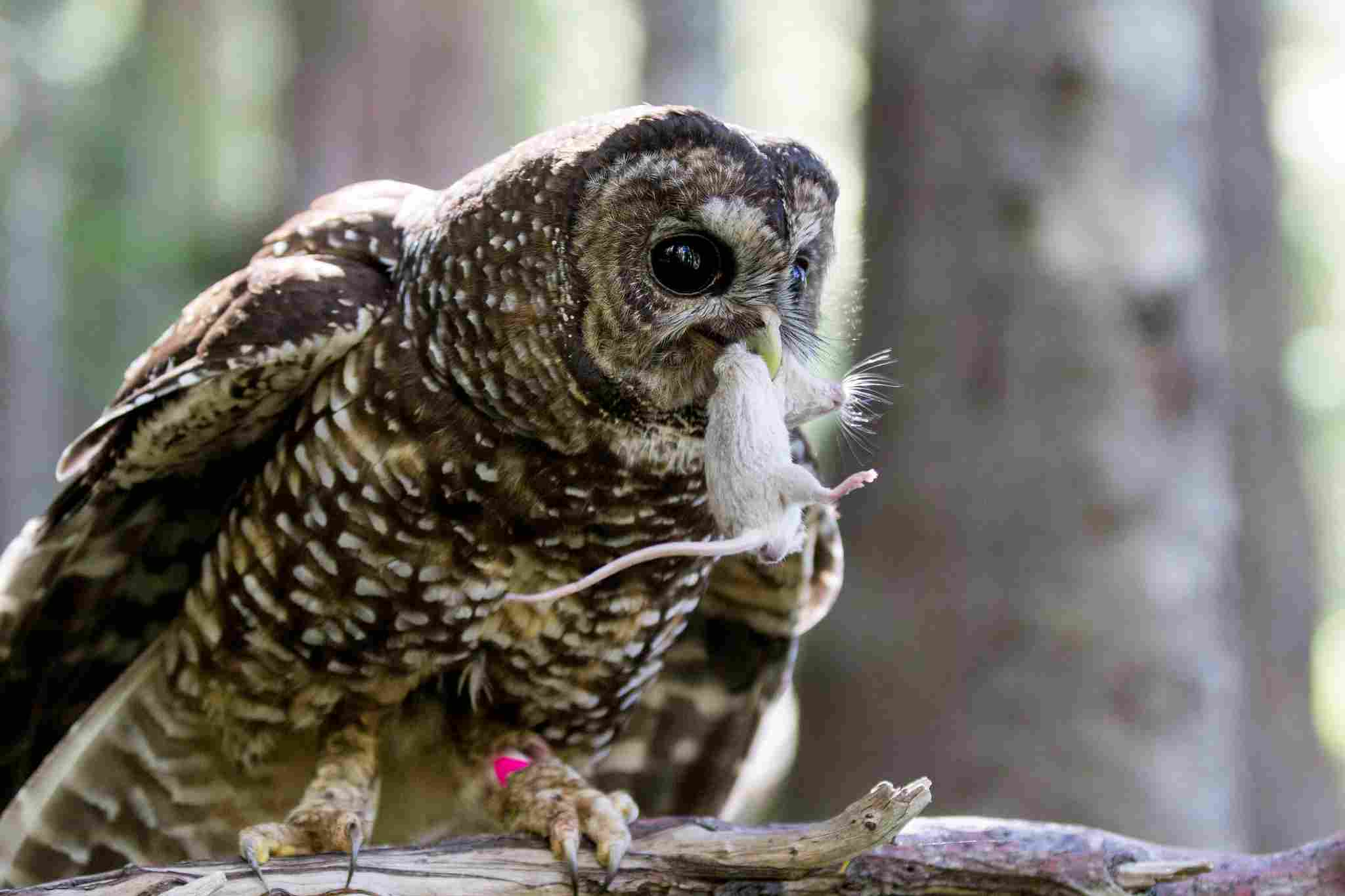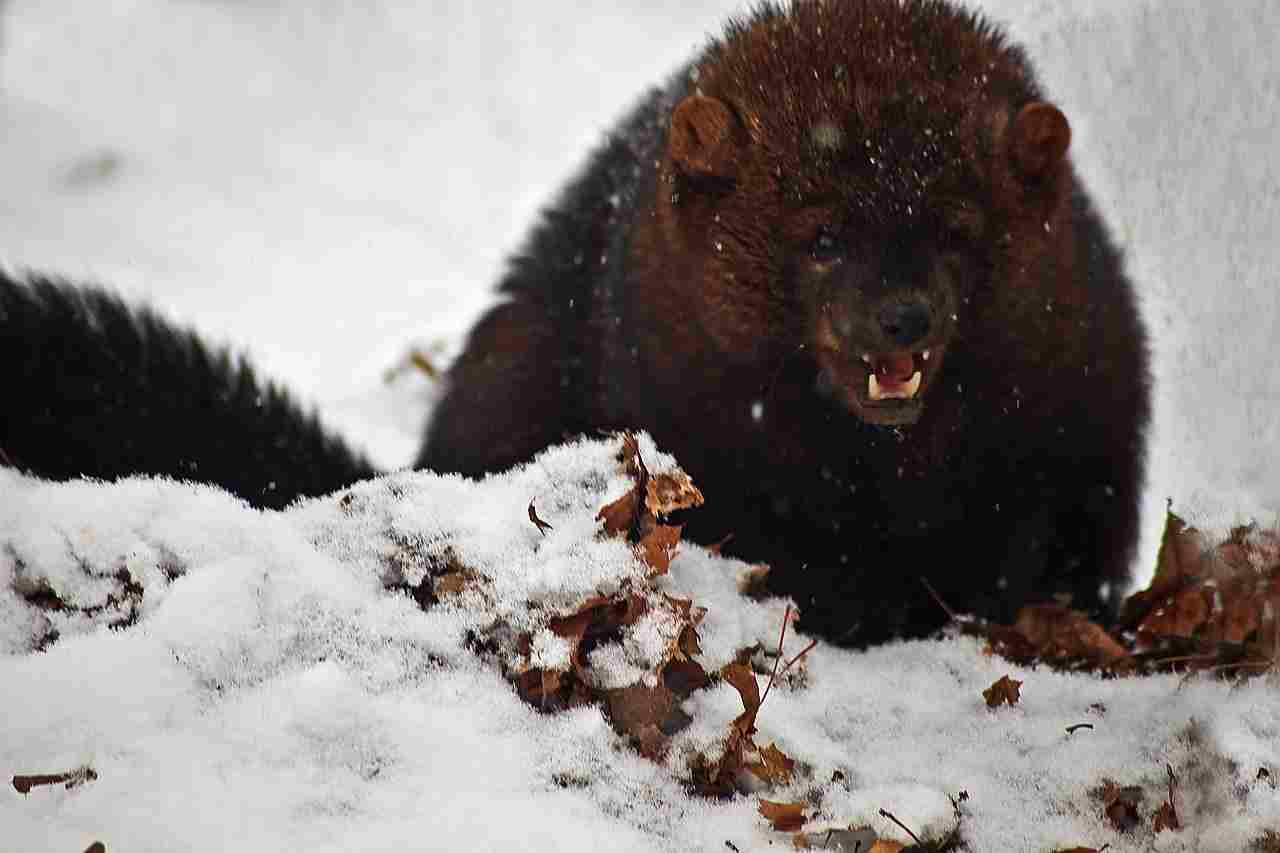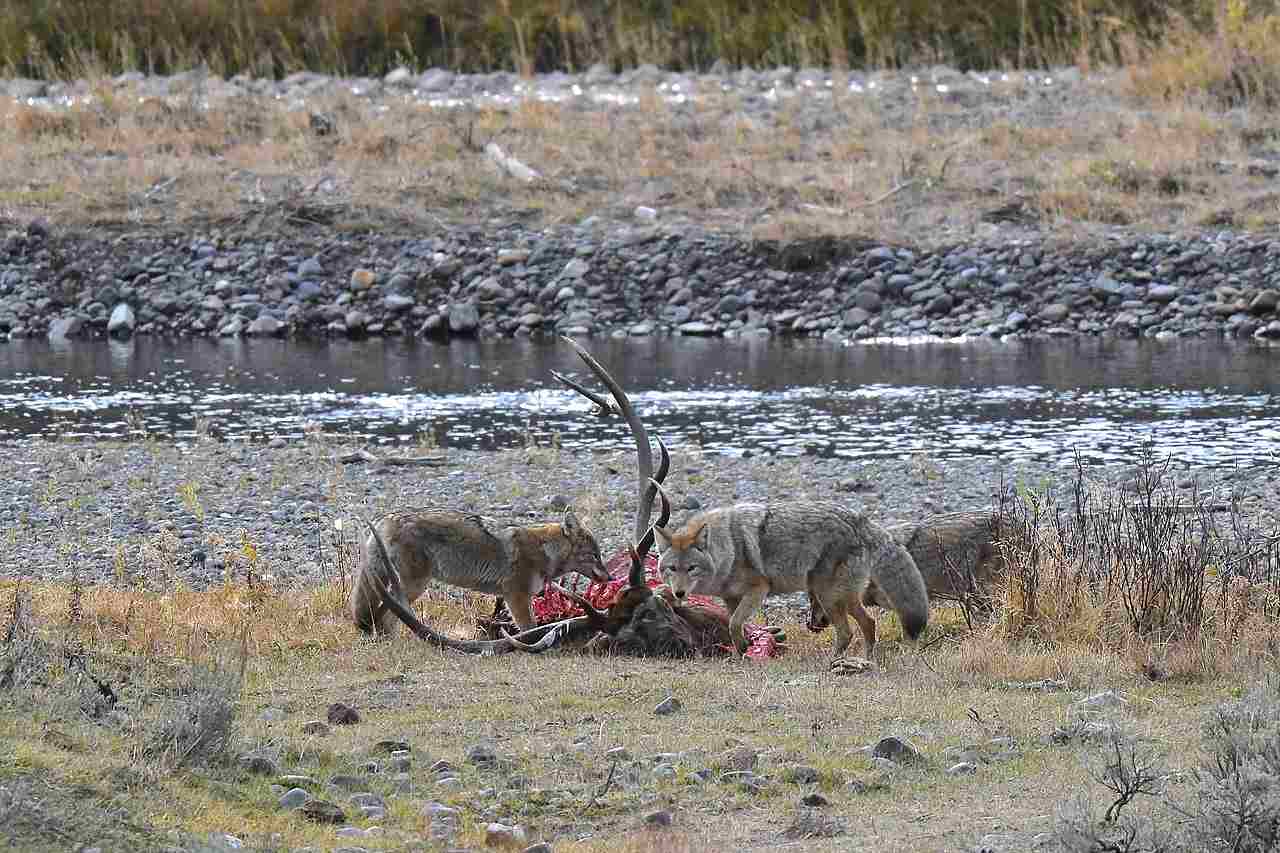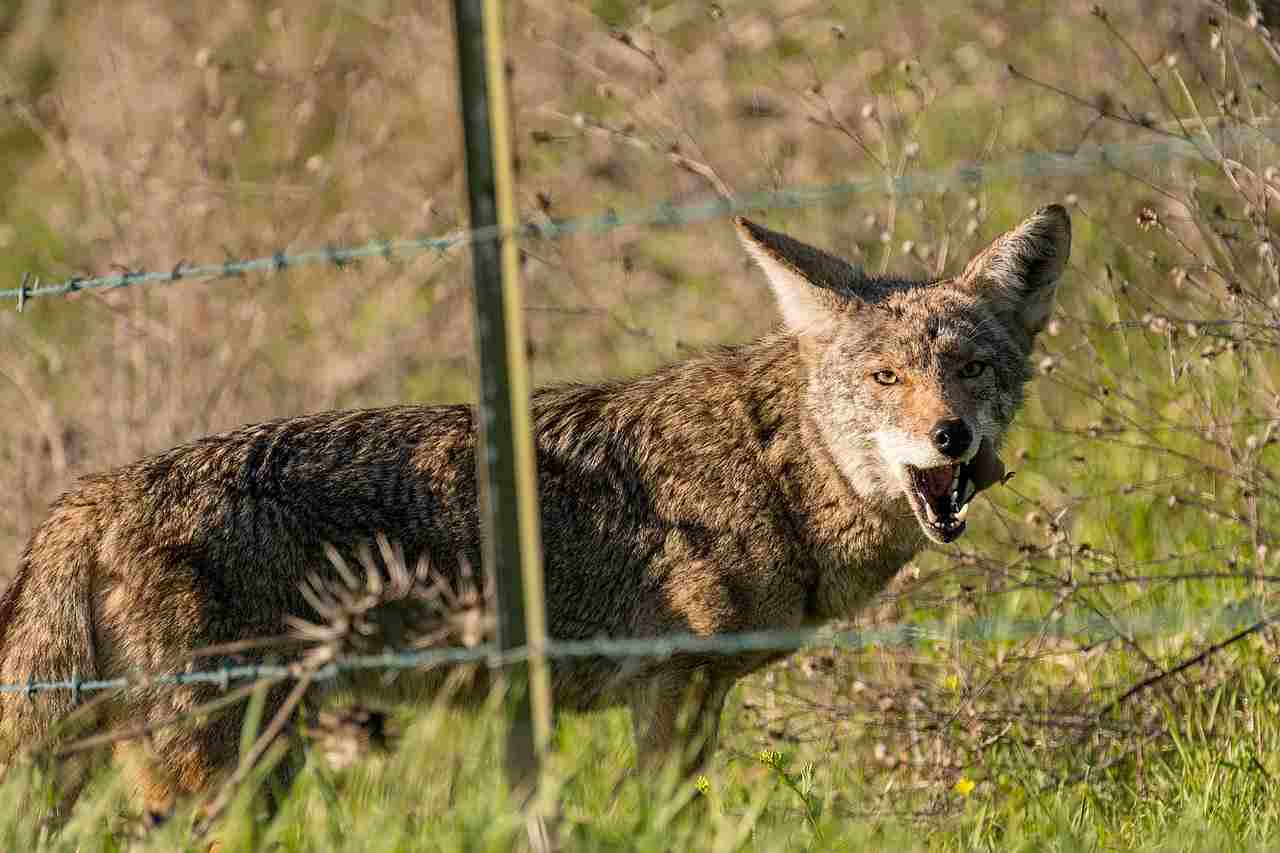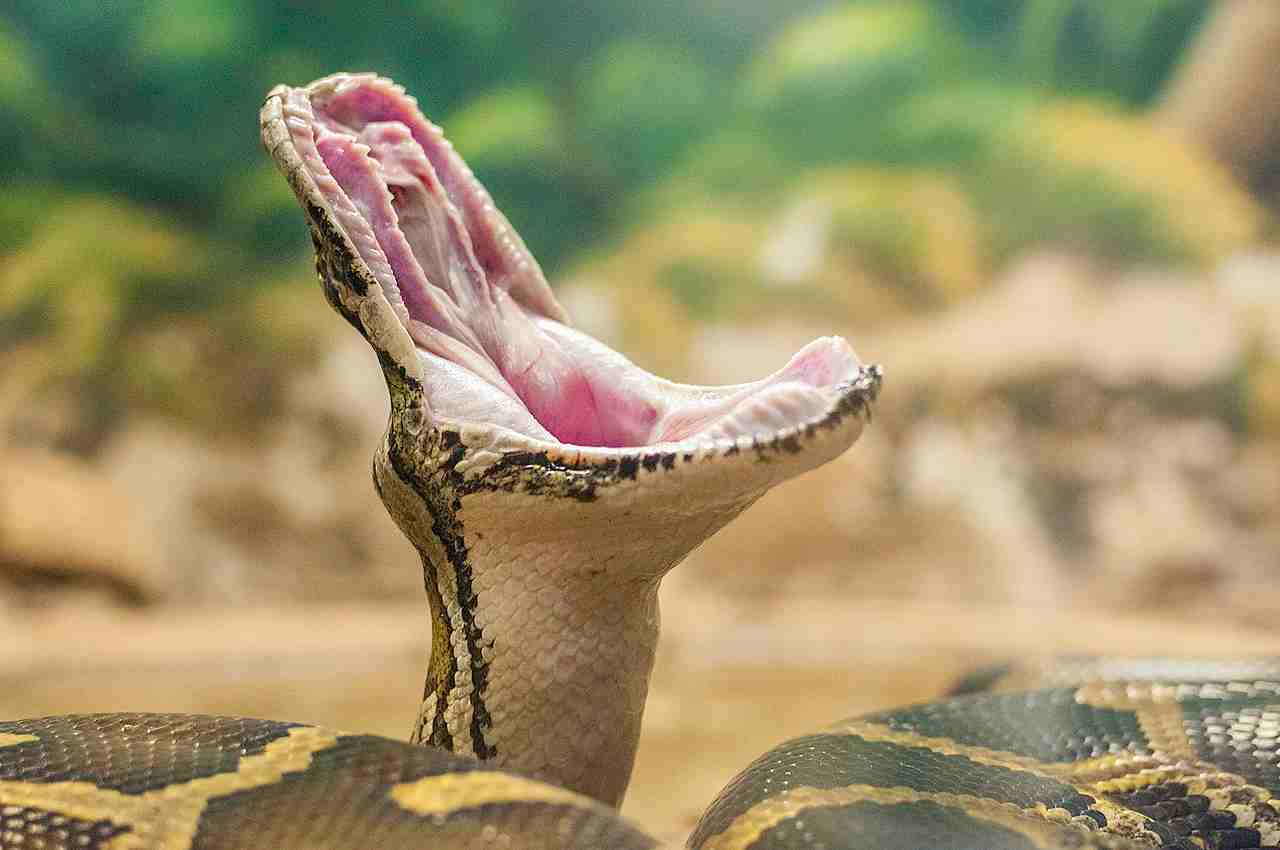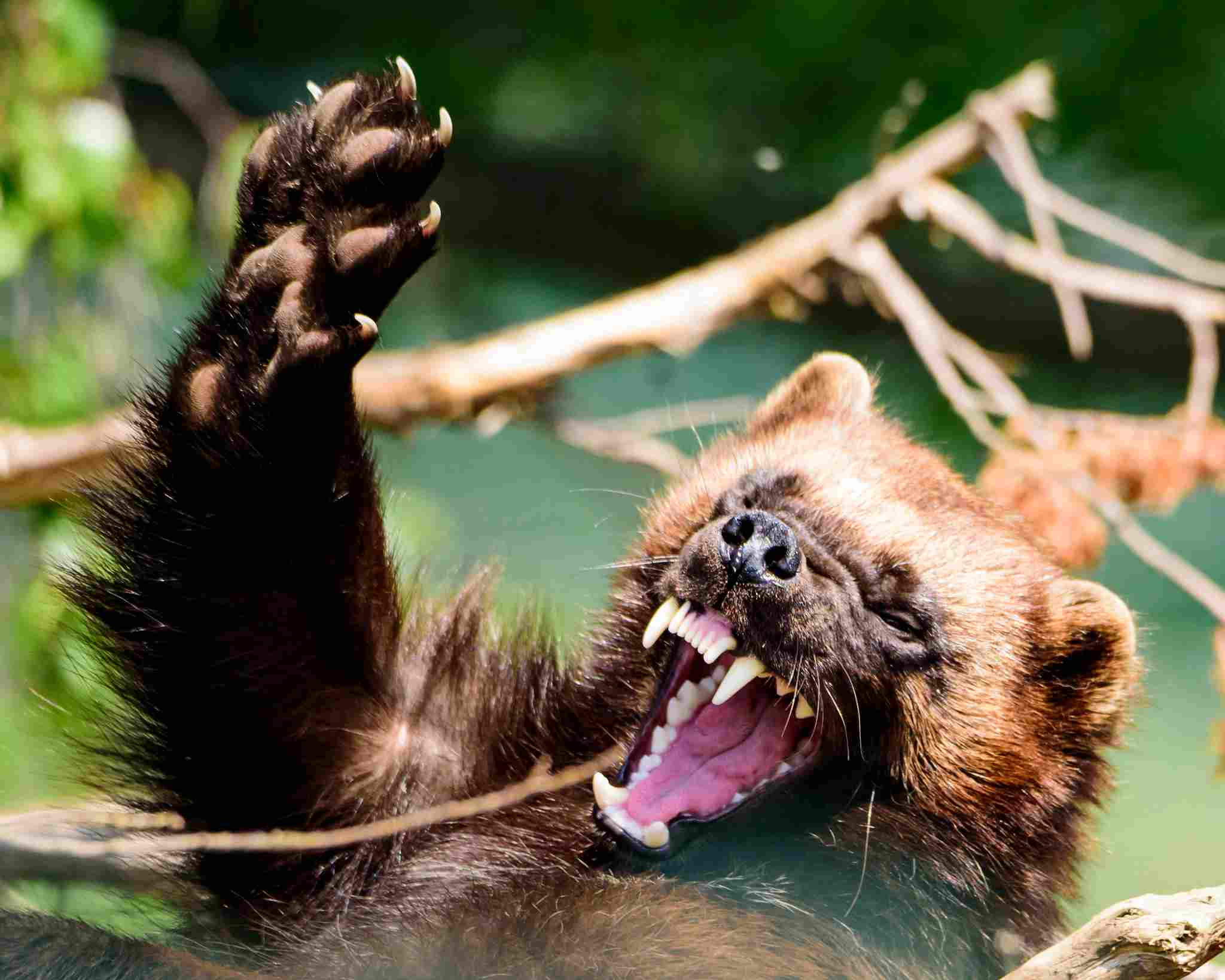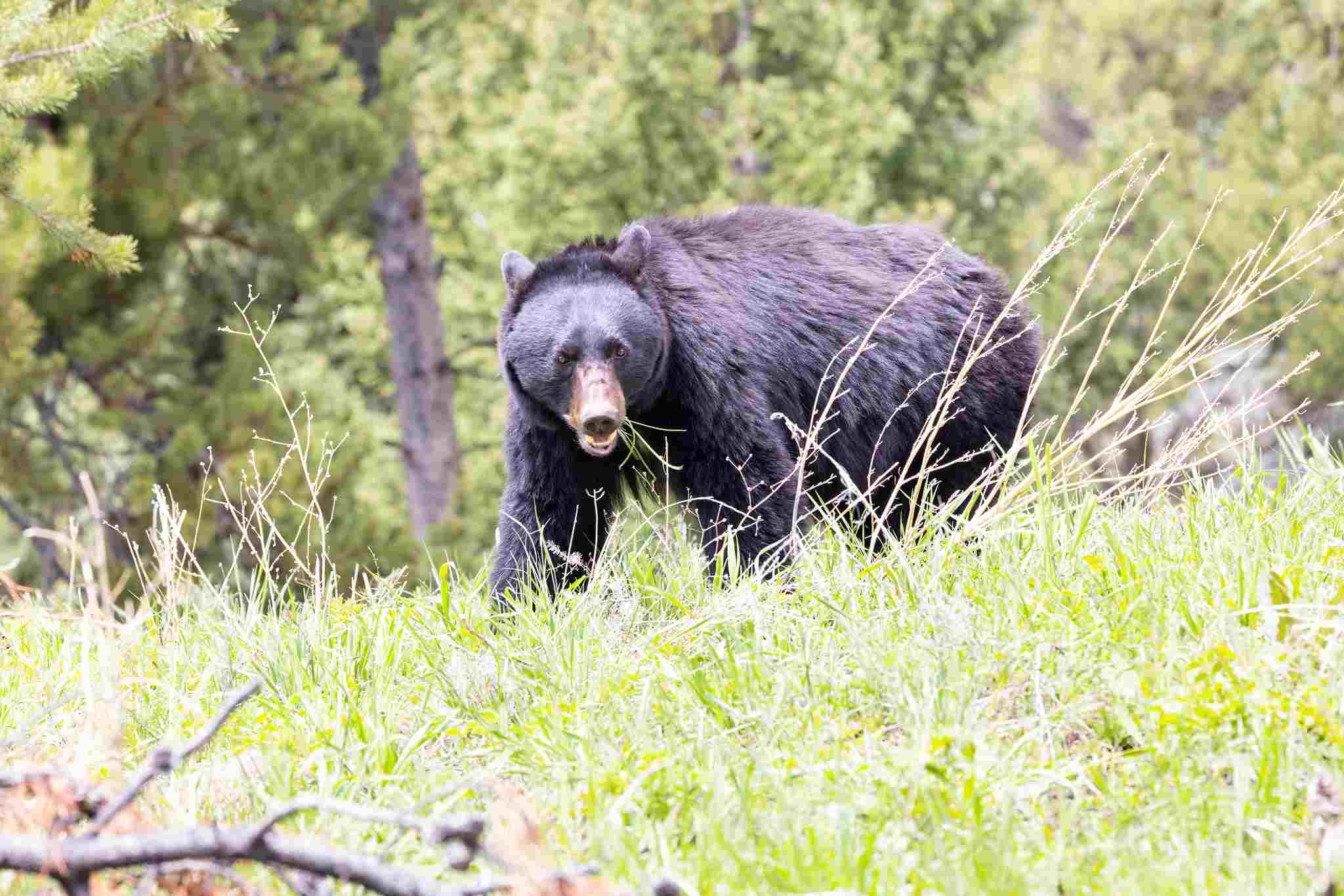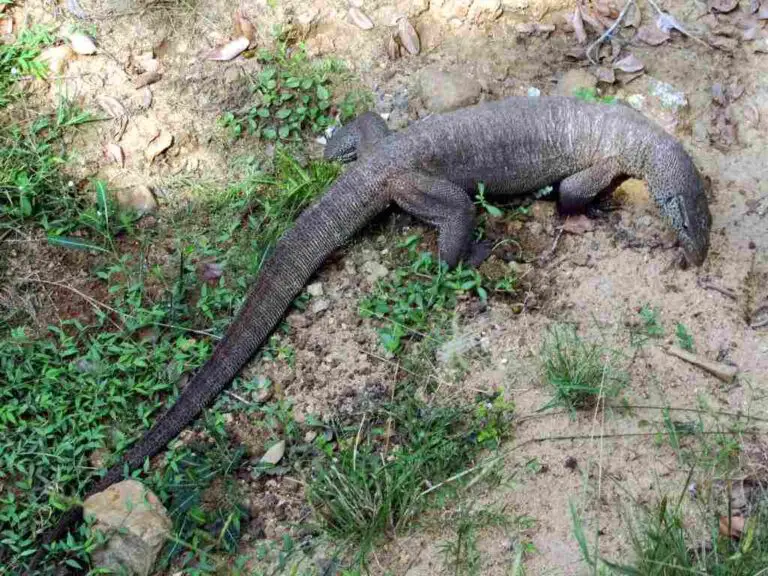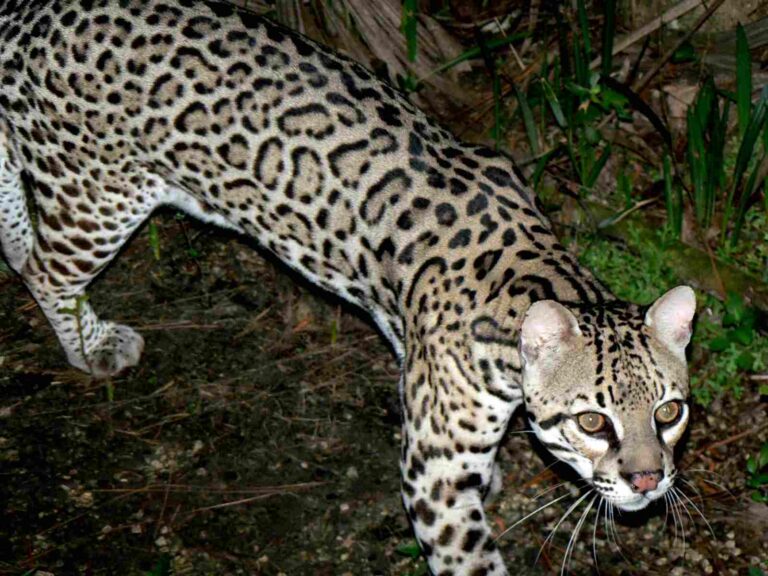25 Dangerous Animals In New Jersey And Their Characteristics
Examples of dangerous animals in New Jersey are Black Bears, Timber Rattlesnakes, and Coyotes. Black Bears, while generally avoiding humans, can be dangerous if they feel threatened or are protecting their cubs. Timber Rattlesnakes and Northern Copperheads are venomous snakes that can pose a risk if encountered, with Timber Rattlesnakes typically warning with a rattle before striking. Coyotes, adaptable to urban and suburban environments, can be aggressive when defending their territory or seeking food. Other potentially dangerous animals in New Jersey include Great Horned Owls, which can attack when defending their nests, and Fisher Cats, known for their aggression when threatened. These animals play crucial roles in the ecosystem, but it’s important to maintain a safe distance and avoid disturbing them to prevent conflicts.
1. Black Bear
The Black Bear (Ursus americanus) is the largest land mammal in New Jersey and is commonly found in the northern and western parts of the state. They are omnivorous and highly adaptable, consuming a varied diet of plants, insects, small mammals, and carrion. Although they generally avoid human contact, Black Bears can be dangerous if they feel threatened, especially when protecting their cubs. They are also known to forage in suburban areas, leading to occasional conflicts with humans. To avoid attracting them, it’s advised to secure garbage, keep bird feeders out of reach, and avoid leaving food outside. Encounters with Black Bears should be handled with caution; experts suggest making noise to alert the bear to your presence and slowly backing away without turning your back. If a bear approaches, it’s crucial to remain calm and avoid running, which can trigger their instinct to chase.
2. Timber Rattlesnake
The Timber Rattlesnake (Crotalus horridus) is a venomous snake found in the forests and mountainous regions of New Jersey, especially in the northern and western areas. It is recognizable by its distinct rattle and variable color patterns, which may include brown, gray, or yellow with dark crossbands. Timber Rattlesnakes are generally not aggressive and will typically use their rattle as a warning before striking. However, their venom is potent and can cause serious harm if they bite, necessitating medical attention. They play a critical role in controlling rodent populations, but their habitats are diminishing, making them a threatened species in the state. If encountered, it’s best to give them a wide berth and avoid disturbing their natural habitat.
3. Northern Copperhead

The Northern Copperhead (Agkistrodon contortrix mokasen) is another venomous snake found in New Jersey, with a presence mainly in the state’s southern regions. They are characterized by their copper-colored heads and distinct hourglass-shaped markings along their bodies. Northern Copperheads are typically docile and prefer to avoid human contact, but they can become defensive if threatened or accidentally disturbed. Their venom, while not usually lethal to humans, can cause significant pain, swelling, and other complications, requiring medical treatment. Copperheads often inhabit wooded areas, rocky outcrops, and areas with dense vegetation, so it’s important to watch your step when hiking or exploring these environments.
4. Eastern Diamondback Rattlesnake
The Eastern Diamondback Rattlesnake (Crotalus adamanteus) is a rare sight in New Jersey, with its range extending primarily in the southeastern United States. This snake is among the largest rattlesnakes and is known for its distinct diamond-shaped patterns along its body and a prominent rattle. Although they are rare in New Jersey, their venom is highly potent, making encounters potentially dangerous. Eastern Diamondbacks tend to inhabit dry, sandy areas, and pine forests, preferring to avoid human interaction. If encountered, it’s crucial to give them space and allow them to move away on their own.
5. Coyotes
Coyotes (Canis latrans) have expanded their range into New Jersey, adapting well to suburban and urban environments. Although they are typically shy and avoid human contact, they can be dangerous when provoked or when protecting their territory and young. Coyotes are omnivorous, feeding on small mammals, birds, and occasionally garbage or pet food left outside. They are also known to prey on pets if given the opportunity. To minimize conflicts with coyotes, it’s advised to keep pets indoors, secure garbage cans, and avoid feeding wildlife. If you encounter a coyote, make loud noises to scare it away and avoid running, as this could trigger a chase response.
6. Red Fox
The Red Fox (Vulpes vulpes) is a common sight in New Jersey, known for its striking red fur, bushy tail, and pointed ears. They are highly adaptable and can thrive in a variety of environments, from forests to suburban areas. Although generally not aggressive toward humans, Red Foxes can become dangerous if they feel threatened or cornered, especially when protecting their dens. They are opportunistic feeders, eating small mammals, birds, fruits, and occasionally scavenging in human areas. To prevent conflicts with Red Foxes, it’s best to secure garbage, keep pets indoors, and avoid leaving food outside. If approached by a fox, making loud noises and waving arms can help deter it.
7. Gray Fox
The Gray Fox (Urocyon cinereoargenteus) is a smaller and less common relative of the Red Fox, found in wooded areas throughout New Jersey. They are unique among foxes for their ability to climb trees, which they use as a means of escape and to hunt for prey. Gray Foxes are generally shy and avoid humans, but they can become aggressive if cornered or if their den is threatened. Like other foxes, they are omnivorous, feeding on small mammals, birds, fruits, and insects. To reduce the likelihood of encounters, it’s advisable to secure garbage and pet food and avoid leaving out food that could attract them. If confronted, making noise and appearing large can help discourage them from approaching.
8. Striped Skunk
The Striped Skunk (Mephitis mephitis) is a common mammal in New Jersey, recognized by its black fur with distinctive white stripes running down its back. Known for their potent defensive spray, skunks can be dangerous if they feel threatened. The spray, which is released from glands near the base of their tail, can cause severe irritation to eyes and skin and is notoriously difficult to remove from clothing and fur. Skunks are nocturnal and generally avoid humans, but they are often attracted to garbage or pet food left outside. To avoid skunk encounters, it’s best to secure garbage cans and avoid leaving food outside at night. If a skunk raises its tail or stomps its feet, it’s a warning sign to back away slowly without startling the animal.
9. Raccoon
Raccoons (Procyon lotor) are widespread throughout New Jersey, easily recognized by their masked face and ringed tail. They are highly adaptable and thrive in both rural and urban environments. While generally not aggressive toward humans, raccoons can be dangerous due to their tendency to scavenge for food in garbage cans and their potential to carry diseases like rabies. If a raccoon appears during the day or behaves aggressively, it might be a sign of illness. To prevent raccoon encounters, secure garbage cans and avoid leaving pet food outdoors. If confronted, do not attempt to approach or corner them, as they can become defensive.
10. Bobcat
The Bobcat (Lynx rufus) is the only wild cat species native to New Jersey, with a population concentrated in the northwestern parts of the state. These elusive animals are known for their tufted ears, spotted fur, and short, bobbed tails. Although typically shy and avoiding human interaction, Bobcats can be dangerous if they feel threatened or are defending their territory. They are skilled hunters, preying on small mammals, birds, and occasionally larger game like deer fawns. Bobcats generally keep to themselves, but if encountered, it’s best to maintain a safe distance and avoid encroaching on their territory. They play a vital role in maintaining ecological balance, helping control small mammal populations.
11. Great Horned Owl
The Great Horned Owl (Bubo virginianus) is one of the largest owls found in New Jersey, with a distinctive appearance marked by large ear tufts and a mottled brown and white plumage. Known for their powerful talons and keen hunting skills, Great Horned Owls prey on a variety of animals, including small mammals, birds, and reptiles. Although they rarely pose a threat to humans, these owls can be dangerous when protecting their nests or hunting, as they have been known to swoop down aggressively. To avoid conflicts with Great Horned Owls, it’s best to keep a safe distance from their nesting sites and avoid approaching them during their hunting hours, typically at night.
12. Bald Eagle
The Bald Eagle (Haliaeetus leucocephalus) is the national bird and symbol of the United States, and it has made a remarkable comeback in New Jersey after being on the brink of extinction due to habitat loss and pesticide use. With its iconic white head and tail feathers, the Bald Eagle is a powerful predator, feeding primarily on fish but also preying on small mammals and birds. Although they are generally not dangerous to humans, Bald Eagles can become aggressive when defending their nests, which are typically located in tall trees near water sources. It’s crucial to respect their nesting areas and maintain a safe distance to avoid any conflicts. They play an important role in the ecosystem by helping control fish and small mammal populations.
13. Peregrine Falcon
The Peregrine Falcon (Falco peregrinus) is renowned for its incredible speed and agility, often reaching speeds over 200 miles per hour during its hunting stoop. These falcons are found throughout New Jersey, especially in urban areas where they nest on tall buildings and bridges. Although they are not typically aggressive toward humans, Peregrine Falcons can be dangerous when defending their nests, attacking with sharp talons and beaks. Their primary diet consists of birds, which they catch mid-air in spectacular displays of hunting prowess. To avoid conflicts with Peregrine Falcons, it’s best to keep a distance from known nesting sites and respect any protective measures in place to safeguard these remarkable birds.
14. Eastern Coyote
The Eastern Coyote (Canis latrans var.) is a hybrid species resulting from interbreeding between Western Coyotes and Eastern Wolves. They are found throughout New Jersey, adapting well to urban and suburban environments. Eastern Coyotes are generally shy and avoid human contact, but they can be dangerous when protecting their territory or young. They are opportunistic feeders, consuming small mammals, birds, fruits, and occasionally garbage or pet food left outside. They can also pose a threat to pets if given the opportunity. To minimize conflicts with Eastern Coyotes, it’s recommended to keep pets indoors, secure garbage cans, and avoid feeding wildlife. If you encounter an Eastern Coyote, making loud noises and avoiding running can help deter them.
15. Fisher Cat
The Fisher Cat (Pekania pennanti) is a large member of the weasel family, found in the wooded areas of New Jersey. Known for their sharp teeth and claws, Fishers are skilled predators, feeding on small mammals, birds, and occasionally porcupines. Although generally reclusive, they can become dangerous if cornered or threatened. Fisher Cats have a reputation for being aggressive, and their presence is often indicated by their loud, high-pitched screeches. To prevent conflicts, it’s best to avoid dense wooded areas where they are known to inhabit, especially during their active hours at dawn and dusk. If encountered, maintaining a safe distance and not attempting to approach or corner them is advised.
16. Opossum
The Opossum (Didelphis virginiana) is North America’s only marsupial, commonly found in New Jersey. Known for their ability to “play dead” when threatened, Opossums are generally not aggressive toward humans but can become defensive if they feel cornered or are protecting their young. They are opportunistic feeders, eating small mammals, insects, fruits, and occasionally scavenging in human areas. While they can be beneficial for pest control, they can also carry diseases like leptospirosis and rabies. To avoid conflicts with Opossums, it’s recommended to secure garbage cans and avoid leaving pet food outside at night. If confronted, it’s best to give them space and allow them to move away on their own.
17. Mink
The Mink (Neovison vison) is a small, semi-aquatic mammal found near rivers, lakes, and wetlands in New Jersey. With their sharp teeth and agile bodies, they are skilled hunters of fish, small mammals, and birds. Although generally not a threat to humans, Minks can become aggressive if they feel threatened or cornered. They are also known to prey on poultry, leading to conflicts with farmers. To avoid such encounters, it’s best to secure areas where Minks might find food, such as chicken coops, and avoid approaching them if spotted. If you encounter a Mink, it’s crucial to keep a safe distance and not attempt to handle or corner it.
18. Eastern Rat Snake
The Eastern Rat Snake (Pantherophis alleghaniensis) is a large, non-venomous snake commonly found in New Jersey’s forests and farmlands. Despite their size, these snakes are generally harmless to humans, preying mainly on rodents, birds, and eggs. However, their large size and aggressive behavior when threatened can make them seem dangerous. If encountered, they may hiss and coil up defensively, but they rarely bite unless provoked. To avoid conflicts, it’s best to leave them undisturbed, as they play an important role in controlling rodent populations. If they enter a home or building, professional removal is recommended.
19. Brown Recluse Spider
The Brown Recluse Spider (Loxosceles reclusa) is a venomous spider known for its distinctive violin-shaped marking on its back. Although rare in New Jersey, their venom can cause severe tissue damage and necrosis, leading to significant medical complications. Brown Recluse Spiders are generally reclusive and avoid human contact, preferring dark, undisturbed areas like basements, attics, and closets. If bitten, prompt medical attention is crucial. To avoid encounters with these spiders, it’s recommended to keep storage areas clean and clutter-free, wear gloves when handling items in dark areas, and seal any gaps or cracks in buildings to prevent their entry.
20. Black Widow Spider
The Black Widow Spider (Latrodectus mactans) is another venomous spider that can be found in New Jersey, recognizable by its shiny black body and distinctive red hourglass marking on its abdomen. Their venom is neurotoxic and can cause severe pain, muscle cramps, and other serious symptoms. Black Widows prefer dark, undisturbed areas such as woodpiles, sheds, and basements. Although they typically avoid humans, they can bite when disturbed or threatened. To prevent encounters, it’s best to wear gloves when handling outdoor items, check shoes and clothing before use, and maintain a clean environment in areas where they may hide. If bitten, seek immediate medical attention.
21. Red-tailed Hawk
The Red-tailed Hawk (Buteo jamaicensis) is one of the most common raptors in New Jersey, known for its reddish tail feathers and broad wings. They are skilled hunters, preying on small mammals, birds, and reptiles. Although generally not a threat to humans, Red-tailed Hawks can become aggressive when defending their nests or hunting. They have been known to dive at humans or pets if they perceive them as threats. To avoid conflicts, it’s advised to keep a safe distance from their nesting sites and avoid approaching them during their active hunting times. They play a crucial role in maintaining the ecological balance by controlling small mammal populations.
22. Sharp-shinned Hawk
The Sharp-shinned Hawk (Accipiter striatus) is a small but agile bird of prey found throughout New Jersey. They are known for their sharp talons and keen hunting skills, primarily preying on small birds and mammals. Although not typically dangerous to humans, these hawks can be aggressive when defending their nests or when startled. Sharp-shinned Hawks are often seen in wooded areas and backyards, particularly near bird feeders. To minimize conflicts, it’s recommended to keep a safe distance from their nesting sites and avoid startling them. They play a beneficial role in controlling bird populations, particularly those that might be considered pests.
23. Turkey Vulture
The Turkey Vulture (Cathartes aura) is a large scavenger bird found across New Jersey, known for its bald red head and large wingspan. While they primarily feed on carrion and are not dangerous to humans, their presence in large numbers can indicate a potential health hazard due to the decomposition of carcasses. Turkey Vultures are generally not aggressive, but they may exhibit defensive behavior, such as vomiting or hissing, if threatened. To avoid attracting Turkey Vultures, it’s best to manage waste properly and remove animal carcasses from public areas. They play a valuable role in cleaning up dead animals, contributing to the ecosystem’s health.
24. Eastern Red Bat
The Eastern Red Bat (Lasiurus borealis) is a common bat species in New Jersey, known for its vibrant reddish-orange fur. Although these bats are generally harmless to humans, they can carry diseases like rabies, making them potentially dangerous if they come into contact with people or pets. Eastern Red Bats feed on insects and play a critical role in controlling insect populations. To avoid conflicts with bats, it’s recommended to keep doors and windows closed, use screens, and avoid disturbing them if found roosting in buildings. If a bat is discovered indoors, professional removal is advised to ensure safety and proper handling.
25. Little Brown Bat
The Little Brown Bat (Myotis lucifugus) is a small bat species common in New Jersey, recognized by its brown fur and small size. They are crucial for controlling insect populations but can be dangerous to humans due to their potential to carry rabies. Little Brown Bats often roost in buildings, leading to encounters with humans. To avoid conflicts, it’s recommended to secure entry points to homes and buildings and avoid handling bats if they are found indoors. If bitten by a bat, immediate medical attention is crucial due to the risk of rabies. Despite these risks, Little Brown Bats play an important ecological role in controlling mosquito and insect populations.
| Animal |
Characteristics/Description
|
| Black Bear |
Large omnivorous mammal; avoid contact; can be dangerous when threatened.
|
| Timber Rattlesnake |
Venomous snake; found in forests; warning rattle before striking.
|
| Northern Copperhead |
Venomous snake; copper-colored head; avoids humans.
|
| Eastern Diamondback Rattlesnake |
Rare; venomous; large; avoids human interaction.
|
| Coyotes |
Adaptable; can be dangerous when protecting territory or young.
|
| Red Fox |
Common; not typically aggressive; can pose threat to small pets.
|
| Gray Fox |
Climbs trees; shy but can be dangerous when threatened.
|
| Striped Skunk |
Known for defensive spray; can cause severe irritation.
|
| Raccoon |
Widespread; carries diseases; can be dangerous if cornered.
|
| Bobcat |
Elusive; only wild cat species in NJ; skilled hunter.
|
| Great Horned Owl |
Large owl; powerful talons; can be aggressive when defending nests.
|
| Bald Eagle |
National bird; aggressive when protecting nests.
|
| Peregrine Falcon |
Fastest bird; aggressive when defending nests.
|
| Eastern Coyote |
Hybrid species; avoids human contact but can pose threat to pets.
|
| Fisher Cat |
Skilled predator; aggressive if cornered.
|
| Opossum |
Only marsupial in NJ; defensive when threatened.
|
| Mink |
Semi-aquatic; can be aggressive if threatened.
|
| Eastern Rat Snake |
Non-venomous; large; can seem aggressive when threatened.
|
| Brown Recluse Spider |
Venomous; causes tissue damage; prefers dark areas.
|
| Black Widow Spider |
Venomous; distinctive red hourglass marking; neurotoxic.
|
| Red-tailed Hawk |
Common raptor; can be aggressive when defending nests.
|
| Sharp-shinned Hawk |
Small but aggressive when threatened; agile hunter.
|
| Turkey Vulture |
